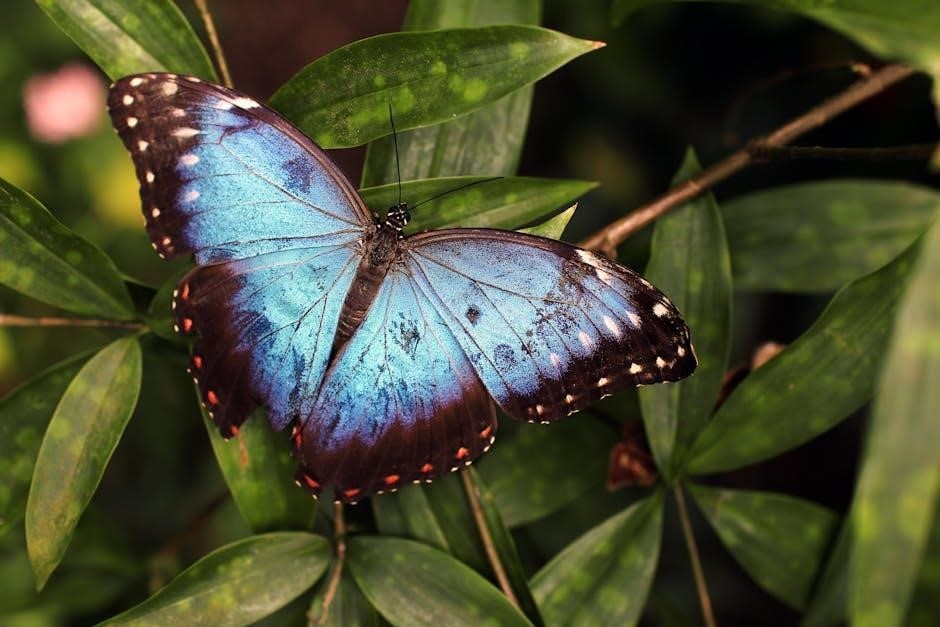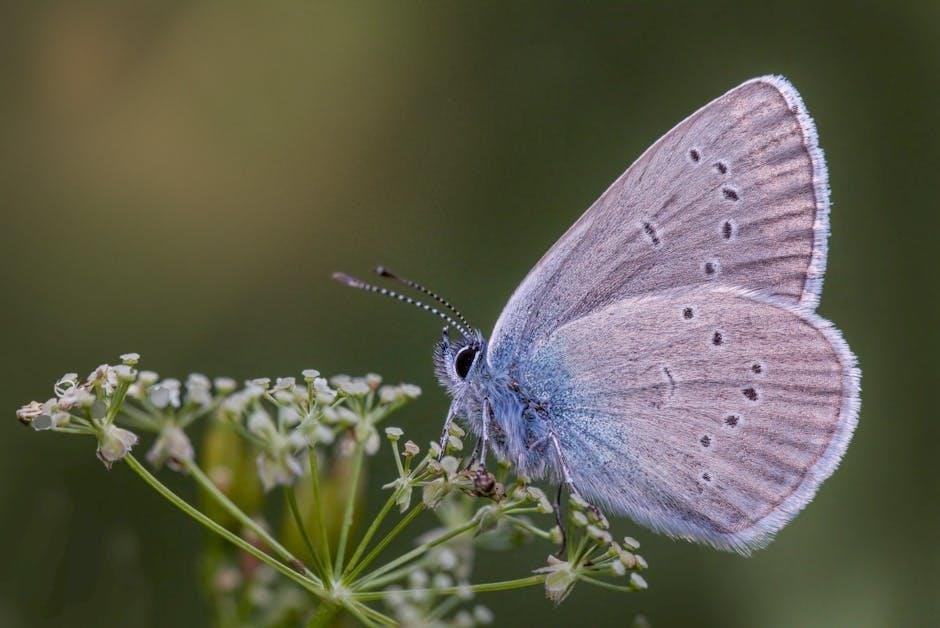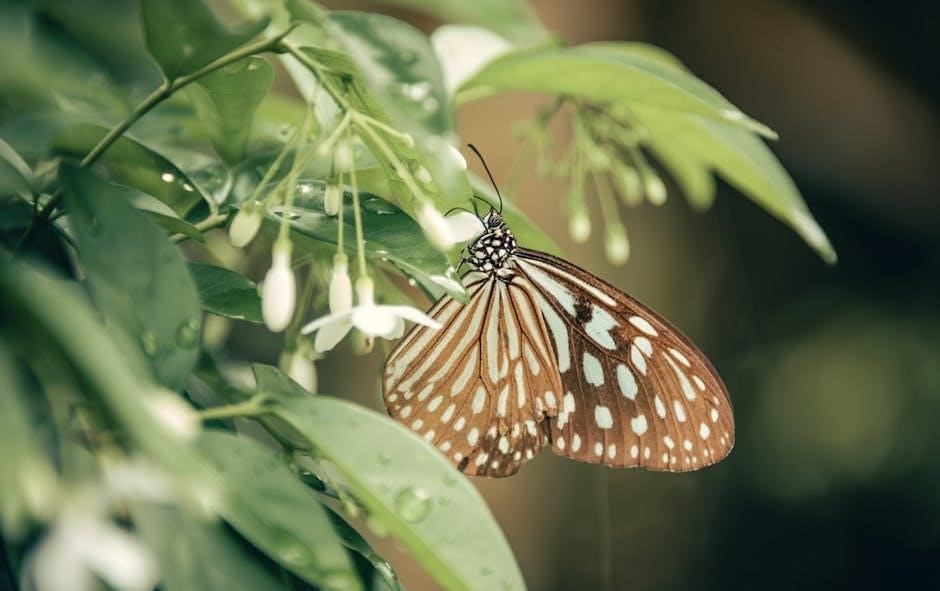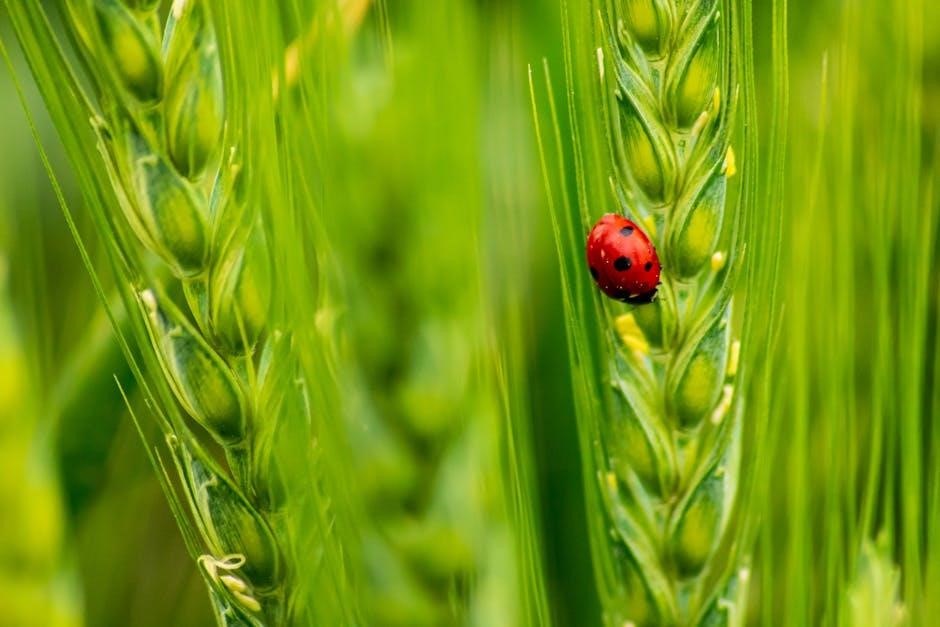Butterfly gardening involves planning a garden to attract butterflies with
- various flowers
that provide nectar and host plants for caterpillars, creating a beautiful and thriving ecosystem naturally every day always․
Understanding the Concept of Butterfly Gardening

To understand the concept of butterfly gardening, it is essential to know that it involves creating a habitat that attracts and supports butterflies throughout their life cycle; This can be achieved by planting a variety of flowers that provide nectar and host plants for caterpillars․ The concept of butterfly gardening is not just about planting flowers, but also about creating a ecosystem that supports the local wildlife․ By understanding the needs of butterflies and other pollinators, gardeners can create a thriving and diverse garden that is beneficial to the environment․ The key to successful butterfly gardening is to provide a source of food, shelter, and water for the butterflies, and to create a habitat that is welcoming and supportive․ With the right plants and design, a butterfly garden can be a beautiful and rewarding addition to any yard or landscape, and can help to support the local butterfly population and promote biodiversity and conservation․
Importance of Butterfly Gardening
The importance of butterfly gardening cannot be overstated, as it plays a crucial role in supporting the local ecosystem and promoting biodiversity․ By creating a butterfly-friendly garden, individuals can contribute to the conservation of these beautiful creatures and help to protect their populations․ Butterfly gardening also has a positive impact on the environment, as it helps to maintain the balance of nature and supports the food chain․ Additionally, butterfly gardens can serve as educational tools, teaching people about the importance of conservation and the interconnectedness of species․ Furthermore, butterfly gardening can have a positive impact on mental health and well-being, providing a sense of calm and tranquility․ Overall, the importance of butterfly gardening extends beyond the garden itself, and has a ripple effect on the environment and the community․ By embracing butterfly gardening, individuals can make a positive difference and help to create a more sustainable and beautiful world․ This is a valuable endeavor that requires attention and care․

Creating a Butterfly Garden
Butterfly gardens require careful planning with specific flowers and plants to attract butterflies naturally every day․
Choosing the Right Plants
To create a thriving garden, it is essential to choose the right plants that will attract butterflies and provide them with the necessary nutrients․ Flowers with nectar guides are particularly attractive to butterflies, as they guide them to the flowers’ nectary․ An ideal butterfly nectar plant will have numerous clusters of small, short-tubed flowers with wide, flat rims, allowing the butterflies to land and feed easily․ Plants with similar colors should be grouped together, as this will make them more attractive to both butterflies and the gardener․ By selecting a variety of plants that bloom at different times, a constant source of nectar will be available to the butterflies throughout the growing season․ This will encourage them to visit and stay in the garden, making it a haven for these beautiful creatures․ With the right plants, a butterfly garden can be a stunning and vibrant addition to any outdoor space․
Designing the Perfect Habitat
Designing the perfect habitat for a butterfly garden involves creating a space that provides a stable platform for butterflies to land and feed․ This can be achieved by incorporating a variety of flat-topped flowers, rocks, and branches into the garden design․ A sunny spot with some shade is also essential, as butterflies need warmth to fly and shade to cool down․ The garden should also have a source of water, such as a shallow dish or birdbath, where butterflies can drink and puddle․ A well-structured garden with a mix of native plants, evergreens, and deciduous plants will provide a welcoming habitat for butterflies․ By incorporating these elements, a butterfly garden can be transformed into a thriving ecosystem that supports the entire life cycle of butterflies, from caterpillar to adult․ With careful planning and design, a butterfly garden can become a haven for these beautiful creatures, providing hours of entertainment and enjoyment․ The garden’s design should also consider the surrounding environment and landscape․

Maintenance and Care
Regular watering and pruning are essential for maintaining a healthy and thriving butterfly garden ecosystem naturally every day always with proper
- care
techniques․
Seasonal Care and Maintenance
Seasonal care and maintenance are crucial for a thriving butterfly garden, with different tasks required throughout the year․ During the spring, it is essential to prune and fertilize plants to promote healthy growth and blooming․ In the summer, regular watering and deadheading are necessary to keep the garden looking its best․ As the weather cools in the fall, it is time to plant new flowers and prepare the garden for the winter months․ In the winter, protection from harsh weather conditions and pests is vital to ensure the garden’s survival․ By following these seasonal care and maintenance tips, gardeners can create a beautiful and welcoming habitat for butterflies and other pollinators․ With proper care, a butterfly garden can be a vibrant and thriving ecosystem, providing a haven for these delicate creatures and a source of joy for gardeners․ Proper maintenance techniques include using
- mulch
and
- compost
․
Ensuring a Thriving Garden
To ensure a thriving butterfly garden, it is essential to provide a source of water, such as a shallow dish or birdbath with fresh water, and a few rocks for perching․ The garden should also receive full sun to partial shade, depending on the types of plants used․ A mix of
- native flowers
and
- host plants
will attract a variety of butterfly species and provide a constant source of food․ Additionally, avoiding the use of pesticides and herbicides is crucial, as these can harm or kill butterflies and other beneficial insects․ By creating a chemical-free environment, gardeners can help support the local ecosystem and ensure the long-term health of their butterfly garden․ With proper planning and maintenance, a butterfly garden can be a beautiful and thriving oasis, providing a haven for these delicate creatures and a source of joy for gardeners, including
- children
and
- educators
․



About the author